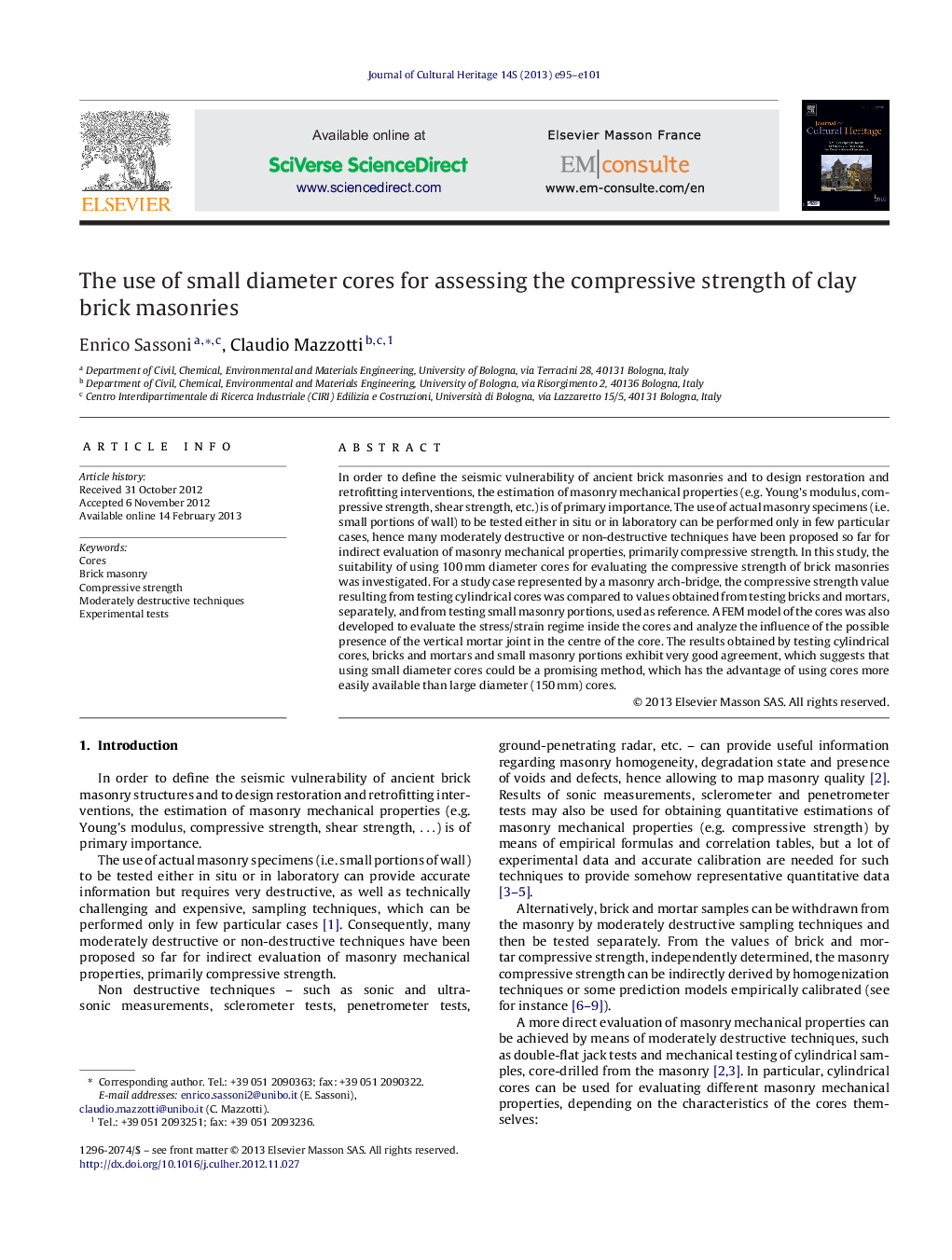| Article ID | Journal | Published Year | Pages | File Type |
|---|---|---|---|---|
| 1038106 | Journal of Cultural Heritage | 2013 | 7 Pages |
In order to define the seismic vulnerability of ancient brick masonries and to design restoration and retrofitting interventions, the estimation of masonry mechanical properties (e.g. Young's modulus, compressive strength, shear strength, etc.) is of primary importance. The use of actual masonry specimens (i.e. small portions of wall) to be tested either in situ or in laboratory can be performed only in few particular cases, hence many moderately destructive or non-destructive techniques have been proposed so far for indirect evaluation of masonry mechanical properties, primarily compressive strength. In this study, the suitability of using 100 mm diameter cores for evaluating the compressive strength of brick masonries was investigated. For a study case represented by a masonry arch-bridge, the compressive strength value resulting from testing cylindrical cores was compared to values obtained from testing bricks and mortars, separately, and from testing small masonry portions, used as reference. A FEM model of the cores was also developed to evaluate the stress/strain regime inside the cores and analyze the influence of the possible presence of the vertical mortar joint in the centre of the core. The results obtained by testing cylindrical cores, bricks and mortars and small masonry portions exhibit very good agreement, which suggests that using small diameter cores could be a promising method, which has the advantage of using cores more easily available than large diameter (150 mm) cores.
